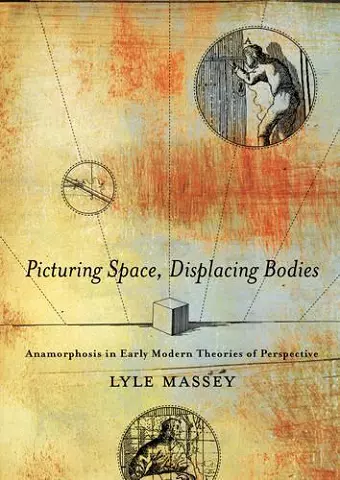Picturing Space, Displacing Bodies
Anamorphosis in Early Modern Theories of Perspective
Format:Paperback
Publisher:Pennsylvania State University Press
Published:15th Jan '16
Currently unavailable, and unfortunately no date known when it will be back
This paperback is available in another edition too:
- Hardback£64.95(9780271029801)

In Picturing Space, Displacing Bodies, Lyle Massey argues that we can only learn how and why certain kinds of spatial representation prevailed over others by carefully considering how Renaissance artists and theorists interpreted perspective. Combining detailed historical studies with broad theoretical and philosophical investigations, this book challenges basic assumptions about the way early modern artists and theorists represented their relationship to the visible world and how they understood these representations. By analyzing technical feats such as anamorphosis (the perspectival distortion of an object to make it viewable only from a certain angle), drawing machines, and printed diagrams, each chapter highlights the moments when perspective theorists failed to unite a singular, ideal viewpoint with the artist’s or viewer’s viewpoint or were unsuccessful at conjoining fictive and lived space. Showing how these “failures” were subsequently incorporated rather than rejected by perspective theorists, the book presents an important reassessment of the standard view of Renaissance perspective. While many scholars have maintained that perspective rationalized the relationships among optics, space, and painting, Picturing Space, Displacing Bodies asserts instead that Renaissance and early modern theorists often revealed a disjunction between geometrical ideals and practical applications. In some cases, they not only identified but also exploited these discrepancies. This discussion of perspective shows that the painter’s geometry did not always conform to the explicitly rational, Cartesian formula that so many have assumed, nor did it historically unfold according to a standard account of scientific development.
“This is a strong, well-articulated argument for the place of embodiment and bodily experience in Renaissance perspective. Lyle Massey is a very unusual scholar, well informed about phenomenological, Lacanian, and structuralist readings of perspective, but just as conversant with the history of geometry and its connections to Enlightenment philosophy. This book is a tonic, just what the field needs to restore some balance and help heal the rift between post-structuralist, psychoanalytic readings and technical, geometric interpretations.”
—James Elkins, The Art Institute of Chicago
“Lyle Massey has done what very few art historians have attempted, which is to develop an expertise that encompasses the history of science, philosophy, and art, in keeping with the organization of knowledge during the early modern and Enlightenment era, while also demonstrating considerable expertise in contemporary philosophy and cultural theory.”
—Claire Farago Renaissance Quarterly
ISBN: 9780271072128
Dimensions: 254mm x 178mm x 13mm
Weight: 431g
192 pages